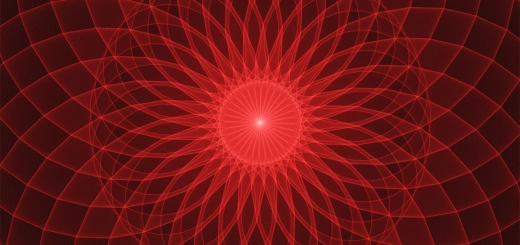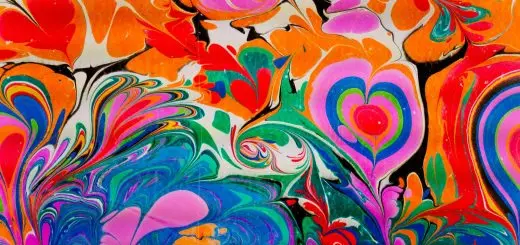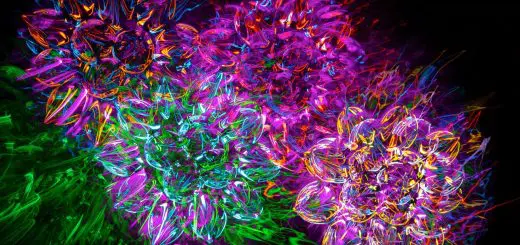The Moirai: Weavers of Destiny in Greek Myth

Looking for more amazing products? Check out our online store and explore our collection here! Happy shopping!
Before diving in, please note: This post is for informational purposes only. If you’d like to know more about how we approach topics, feel free to check out our friendly Disclaimer Page.
Hey there, amazing readers! 
We’re committed to delivering quality posts, and your support (even just sticking around despite the ads) means everything to us. So, bear with us, and thanks for helping us keep the good vibes rolling. Now, on to the fun stuff!
TRANSLATE BUTTON AT THE END OF THE ARTICLE
Overview
The Moirai, also known as the Fates, were an important trio of deities in Greek mythology who were believed to be the weavers of destiny.
They were responsible for determining the fates of both mortals and gods, spinning the thread of life, and ultimately deciding when it should be cut.
Composed of three sisters – Clotho, Lachesis, and Atropos – the Moirai played a significant role in shaping the lives and destinies of individuals in Greek mythology.
This article will delve into the origins and characteristics of the Moirai, their role in shaping human destiny, and their enduring legacy in modern culture.
Who were the Moirai in Greek mythology?
In Greek mythology, the Moirai were a trio of goddesses responsible for controlling the thread of life and determining the destinies of both mortals and gods.
They were often depicted as elderly women, and their presence was believed to be omnipresent and all-encompassing.
The Moirai were considered to be daughters of Zeus and Themis, the Titan goddess of divine law and order.
They were known by different names, with the most common being Clotho, Lachesis, and Atropos.
The Moirai’s role in shaping human destiny
The Moirai were responsible for weaving the thread of life, which symbolized an individual’s destiny.
They controlled the beginning, duration, and end of each person’s life.
Once the thread was spun, it was handed over to the other sisters to be measured and ultimately cut.
In this way, the Moirai had complete control over the fate of every individual, including both mortals and gods.
Their role was crucial in maintaining order and balance in the world.
Clotho: The spinner of life’s thread
Clotho, the youngest of the three sisters, was responsible for spinning the thread of life.
She would create the initial thread from her spindle, starting the journey of an individual from birth to death.
Clotho was often depicted as a young maiden, holding a spindle and a distaff, symbolizing her role as the weaver of destiny.
Her name, derived from the Greek word for "spinner," perfectly encapsulated her function in Greek mythology.
Lachesis: The allotter of life’s length
Lachesis, the middle sister, was responsible for measuring the length of the thread spun by Clotho.
She determined the duration of an individual’s life, establishing how long they would live before their thread was cut by Atropos.
Lachesis was often portrayed as a mature woman, holding a measuring rod or a pair of scales, representing her role as the allotter of life’s length.
Her name, meaning "apportioner," reflected her responsibility in determining the span of one’s existence.
Atropos: The cutter of life’s thread
Atropos, the eldest of the three sisters, had the most significant role in the Moirai.
She was responsible for cutting the thread of life, thereby bringing an individual’s existence to an end.
Atropos was often depicted as a fierce and unyielding figure, holding a pair of shears or a knife.
Her name, which means "inflexible" or "inevitable," perfectly captured the finality and inescapability of death.
How did the Moirai determine one’s fate?
The Moirai were believed to be all-knowing and omnipotent, making their decisions on an individual’s fate based on their collective wisdom and insight.
Their judgments were not influenced by personal bias or external factors, but rather guided by a higher sense of order and balance.
The Moirai would consult the Book of Fates, a divine record that contained the destiny of every living being, before weaving and cutting the thread of life.
This ensured that each individual’s fate was predetermined and inevitable.
The Moirai and the concept of inevitability
The Moirai played a crucial role in emphasizing the concept of inevitability in Greek mythology.
Explore the Path to Spirituality and Enlightenment – Start Here.
Their decisions were final and irrevocable, highlighting the belief that fate was an inescapable force that no mortal or god could defy.
This notion of inevitability added a layer of depth and complexity to the stories and myths in which the Moirai appeared, as characters grappled with their predetermined destinies and attempted to challenge or alter them.
Myths and stories featuring the Moirai
The Moirai appeared in numerous myths and stories throughout Greek mythology, often influencing the lives of prominent figures.
One such myth involved the tragic hero Oedipus, whose destiny was foretold by the Moirai.
Despite his best efforts to avoid his predicted fate, Oedipus unwittingly fulfilled the prophecy, leading to his downfall.
Another well-known myth involving the Moirai was the story of Theseus and the Minotaur, in which the hero’s fate was determined by the thread given to him by Ariadne, who was believed to be guided by the Moirai.
The Moirai’s influence on Greek literature and art
The Moirai’s presence in Greek mythology had a profound impact on literature and art.
Their depiction in various works of Greek literature, including epic poems such as Homer’s "Iliad" and "Odyssey," showcased their significance in shaping the destinies of both mortals and gods.
Additionally, their portrayal in art, such as pottery and sculptures, provided a visual representation of the Moirai’s role as the weavers of destiny.
These artistic interpretations not only served as a form of homage but also reinforced the belief in fate and the power of the Moirai.
The Moirai in comparison to other mythological figures
While the Moirai were unique in their role as the weavers of destiny, they shared similarities with other mythological figures.
In Norse mythology, the Norns fulfilled a similar function, weaving the threads of fate for both gods and humans.
Similarly, the Three Fates in Roman mythology, known as the Parcae, were believed to have control over an individual’s destiny.
These parallels highlight the universal themes of fate and destiny that permeate different mythologies and cultures.
The enduring legacy of the Moirai in modern culture
The influence of the Moirai extends beyond ancient Greek mythology, as their concept of fate and destiny continues to resonate in modern culture.
Their presence can be seen in various forms of media, including literature, film, and television, where characters grapple with their predetermined destinies and attempt to alter their fate.
The Moirai’s legacy serves as a reminder of the enduring fascination with the concept of destiny and the age-old question of whether one’s fate can truly be changed.
Conclusion
The Moirai, or the Fates, were an integral part of Greek mythology, responsible for weaving the thread of life and determining the destinies of mortals and gods.
Comprised of the three sisters Clotho, Lachesis, and Atropos, the Moirai were revered for their role in shaping human destiny.
Their presence in Greek literature and art, as well as their enduring legacy in modern culture, highlights the timeless fascination with fate and the belief that one’s destiny is predetermined.
The Moirai serve as a reminder of the power and inevitability of fate, prompting individuals to ponder the role of destiny in their own lives.

The Enlightenment Journey is a remarkable collection of writings authored by a distinguished group of experts in the fields of spirituality, new age, and esoteric knowledge.
This anthology features a diverse assembly of well-experienced authors who bring their profound insights and credible perspectives to the forefront.
Each contributor possesses a wealth of knowledge and wisdom, making them authorities in their respective domains.
Together, they offer readers a transformative journey into the realms of spiritual growth, self-discovery, and esoteric enlightenment.
The Enlightenment Journey is a testament to the collective expertise of these luminaries, providing readers with a rich tapestry of ideas and information to illuminate their spiritual path.
Our Diverse Expertise
While our primary focus is on spirituality and esotericism, we are equally passionate about exploring a wide range of other topics and niches 

To ensure we provide the most accurate and valuable insights, we collaborate with trusted experts in their respective domains 
Our blog originally focused on spirituality and metaphysics, but we’ve since expanded to cover a wide range of niches. Don’t worry—we continue to publish a lot of articles on spirituality! Frequently visit our blog to explore our diverse content and stay tuned for more insightful reads.
Hey there, amazing reader! 
Check out our store here and take a peek at some of our featured products below! Thanks for being awesome!















